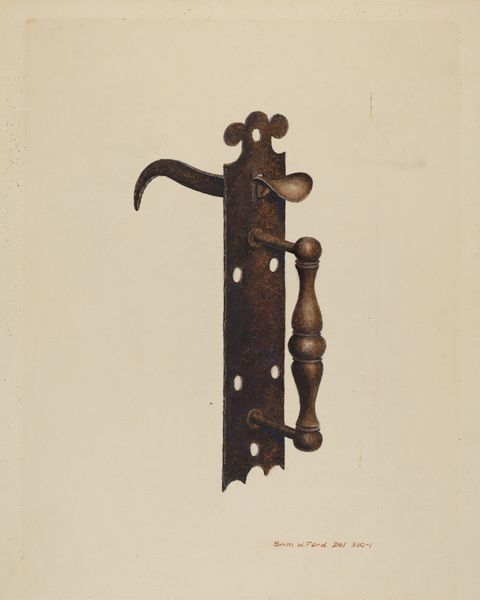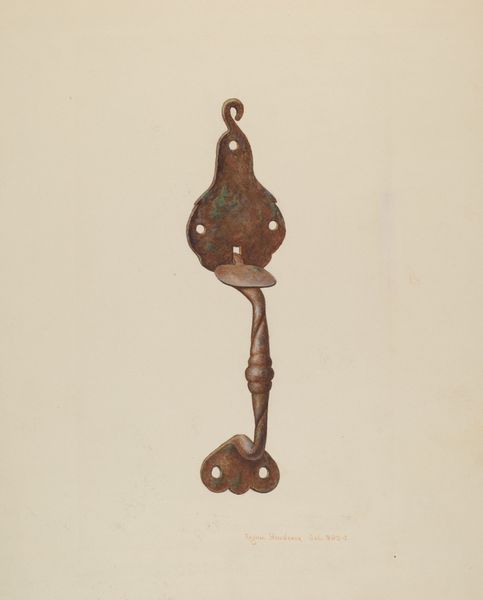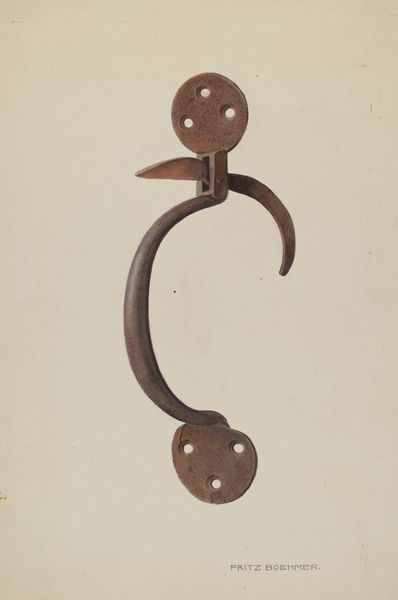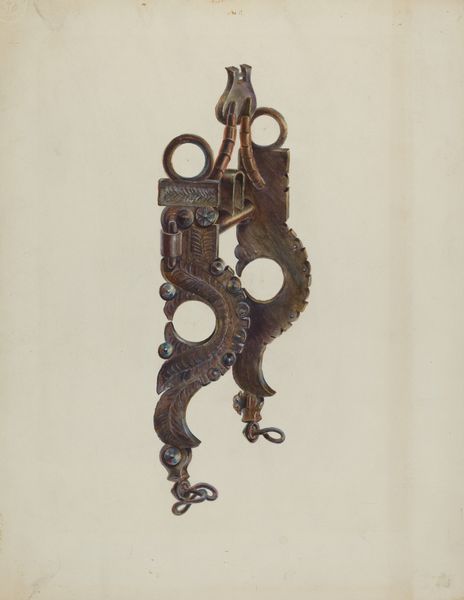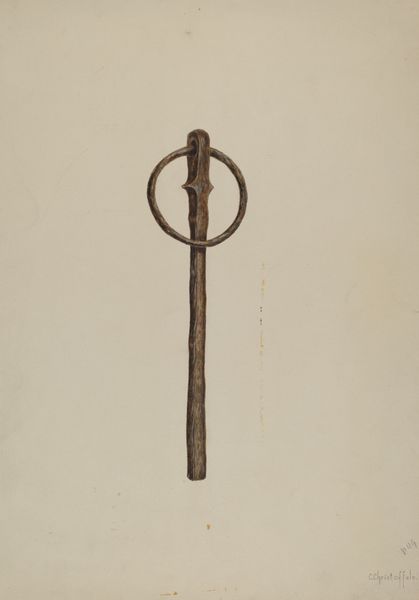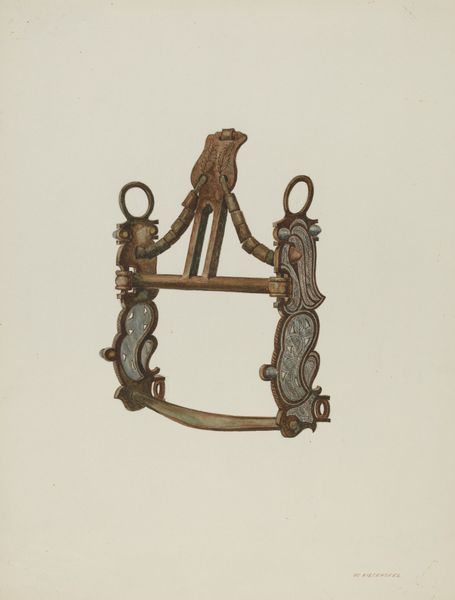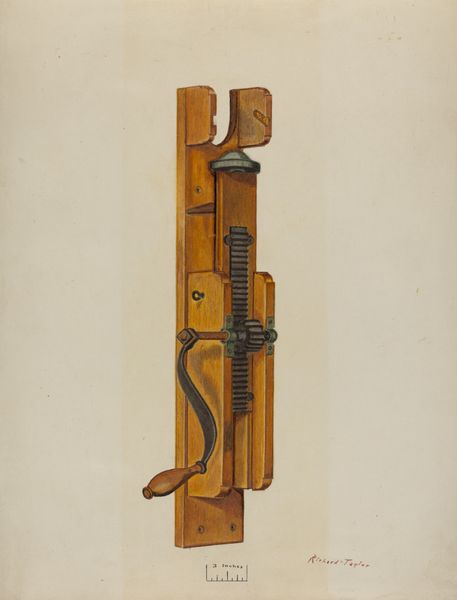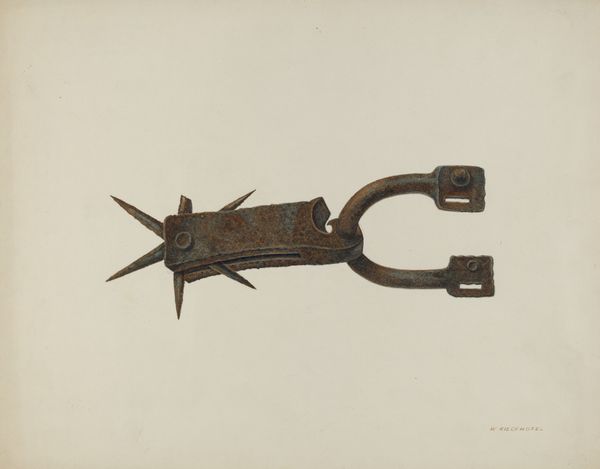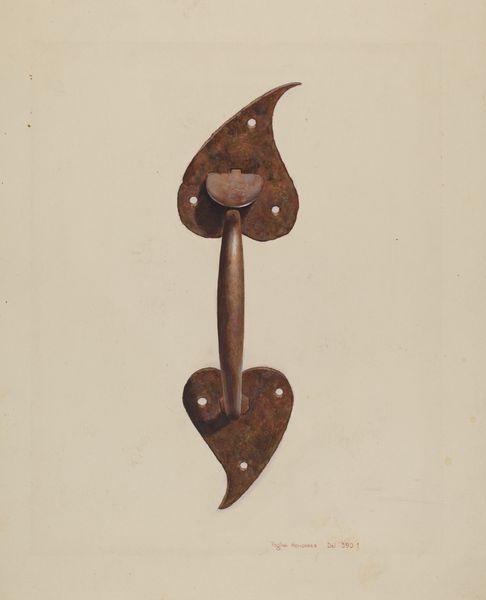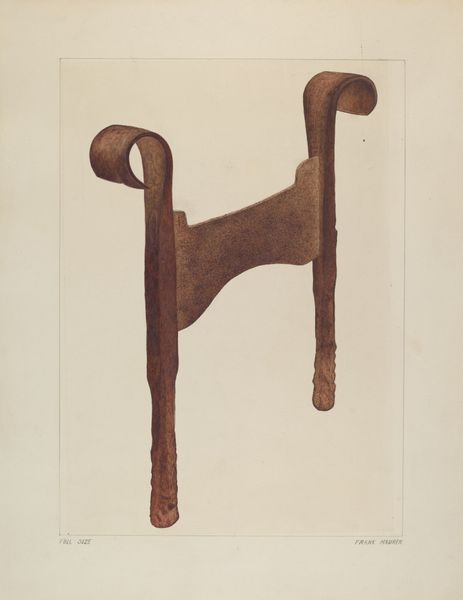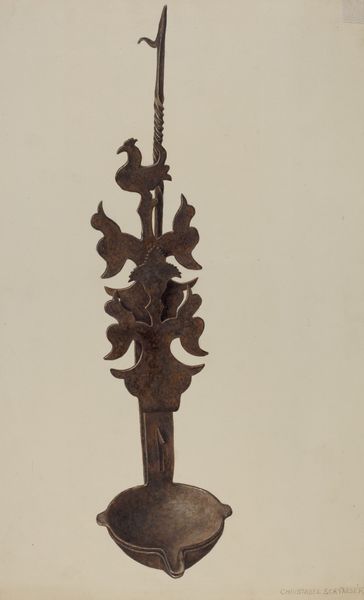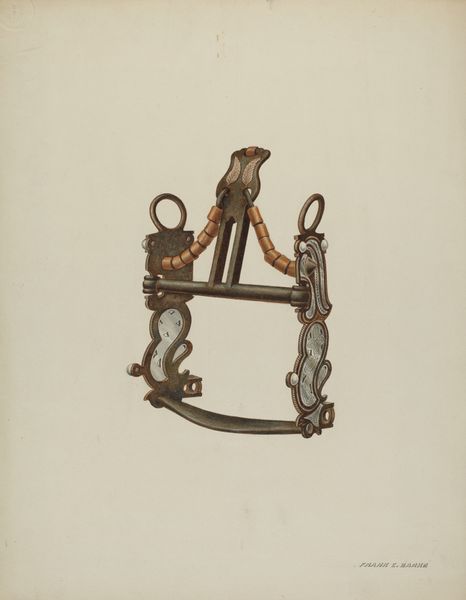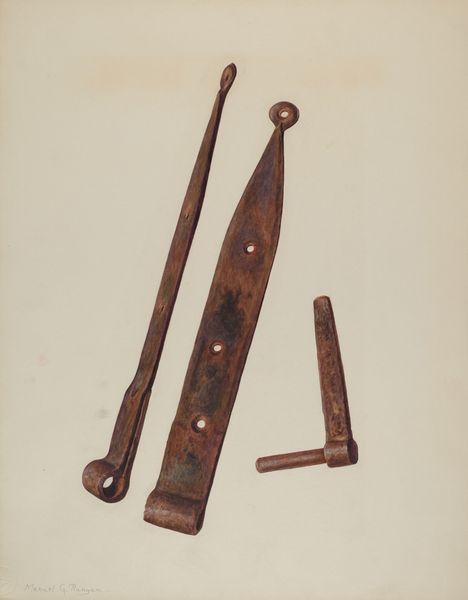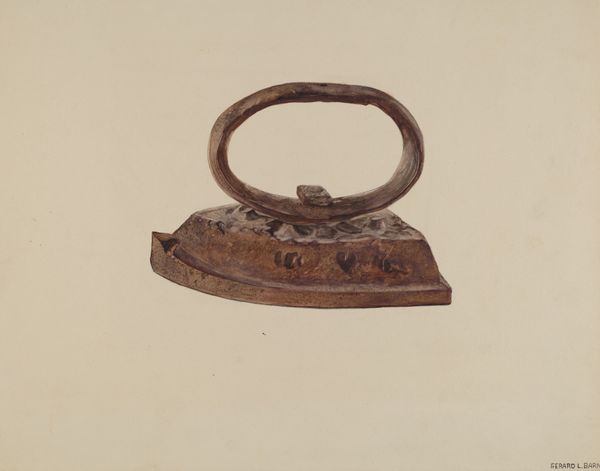
drawing, watercolor
#
drawing
#
sculpture
#
watercolor
#
academic-art
#
watercolor
#
realism
Dimensions: overall: 35.5 x 24.2 cm (14 x 9 1/2 in.)
Copyright: National Gallery of Art: CC0 1.0
Editor: Here we have Fritz Boehmer's "Door Latch," created around 1939, seemingly a watercolor drawing. I'm struck by its straightforward depiction. What aspects of its creation and context do you find most compelling? Curator: The choice of rendering a utilitarian object like a door latch in watercolor, typically associated with landscapes or portraits, is significant. It challenges traditional hierarchies of art. We see a deliberate act of elevating the everyday, questioning the separation between "high art" and functional design. Consider the social context: What were the dominant ideologies concerning labor and craft during that period? Editor: That's interesting. I hadn’t considered the social implications. How does the medium itself—watercolor—play into that challenge? Curator: Watercolor allows for a delicate and nuanced representation of the latch's rust and wear, documenting the effects of labor and time. Think about the iron mining, forging, and manufacturing processes. These physical processes shaped the object and its context of usage. Do you see the aesthetic value in an object made of such brutal industry, or a beautiful image thereof? Editor: I see what you mean. It is celebrating the common, every day person. Would that connect with other movements happening at the time? Curator: Precisely. It could align with social realist tendencies that focused on the lives and experiences of the working class, who used latches just like this. Also, who would choose to use it as the image of a watercolor artwork? Perhaps they want us to reconsider what art *can* be? What is represented is inextricably tied to the means of its production and the socio-economic context in which it exists. Editor: So, beyond just being a picture of a latch, it becomes a statement about value and labor. I’ll definitely be thinking about materiality in art differently. Curator: Excellent. Reflecting on materials, labor, and social use, provides a broader way to approach an artwork.
Comments
No comments
Be the first to comment and join the conversation on the ultimate creative platform.
